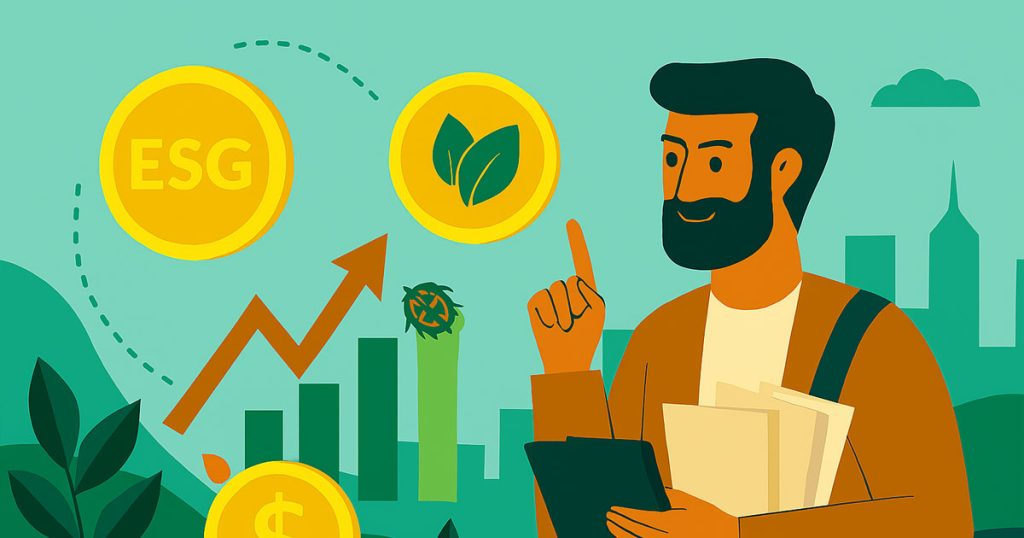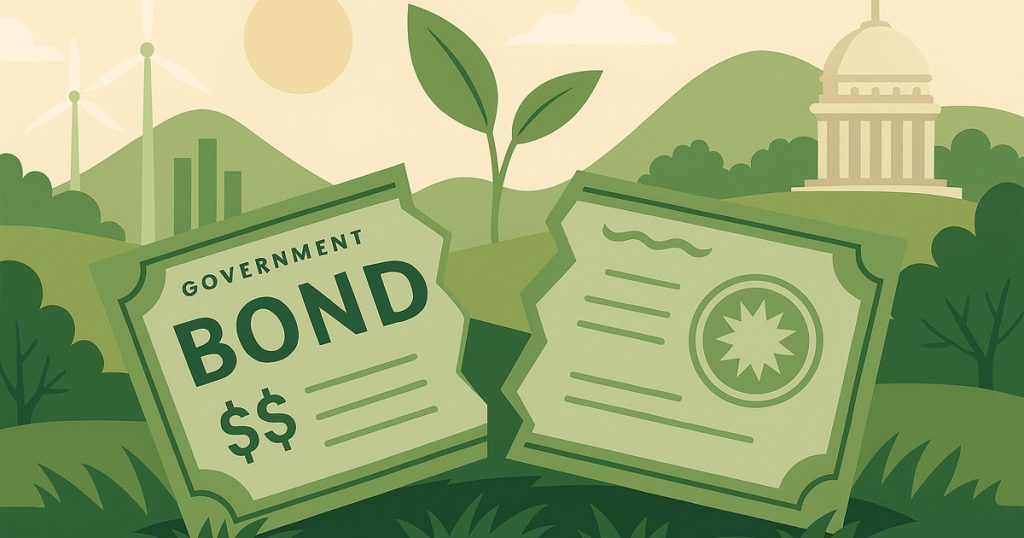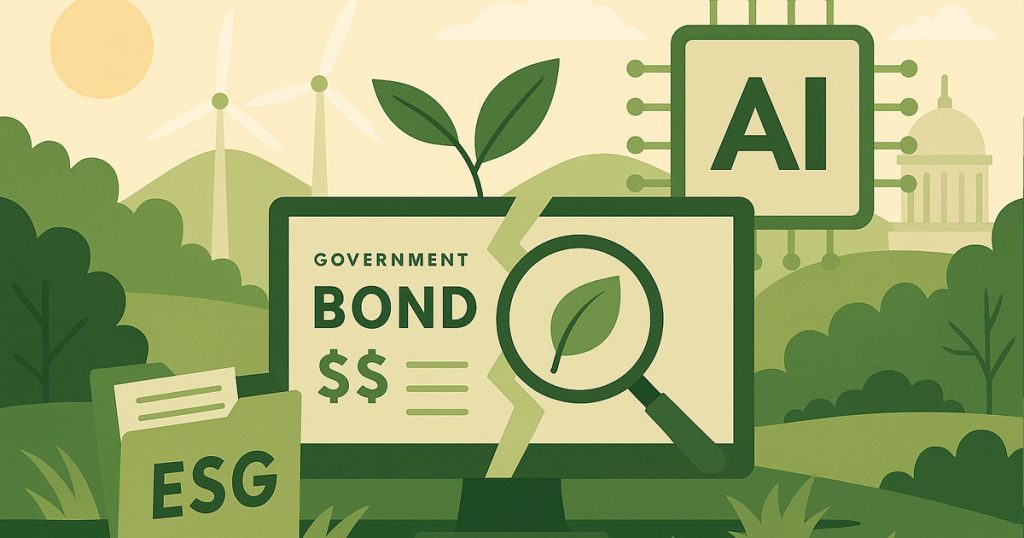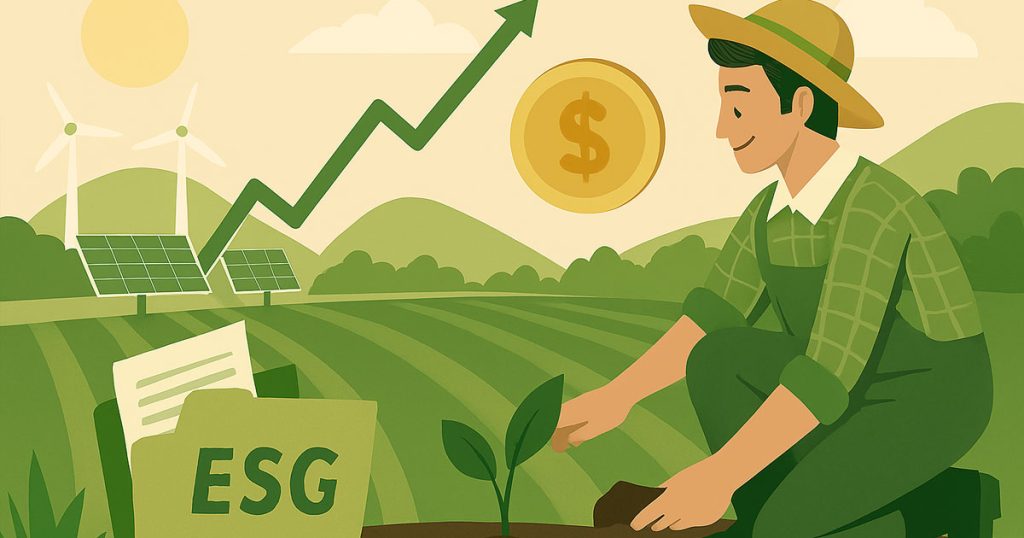Sustainable Finance Strategies 2025: Unlocking Biodiversity Credits, Carbon Offset Arbitrage, and Next-Gen ESG Value – Sustainable Finance Strategies 2025: Advanced Approaches for Maximum Impact. Discover actionable sustainable finance strategies for 2025, including integrating biodiversity credits into ESG portfolios, mastering carbon offset arbitrage, dissecting green bond premiums, using AI for impact washing detection, and realizing high ROI in regenerative agriculture.

A New Era for Sustainable Finance Strategies
If you’re reading this, I know you’re not just looking for another generic “green finance” overview. In the never-static world of sustainable investments, I’ve watched firsthand as innovative sustainable finance strategies have evolved from press-release platitudes to real alpha-generating tools. In 2025, the rules are changing, and smart personal finance thinkers (like GroundBanks.Com readers) need to stay ahead.
Today’s best approaches go way beyond conventional ESG screens. Instead, they’re about understanding cutting-edge developments: integrating biodiversity credits using TNFD betas, timing carbon offset arbitrage across registry/market gaps, pinpointing green bond premiums by issuer, rooting out impact washing with next-gen AI audits, and unlocking genuine regenerative agriculture investments that major funds routinely miss.
This isn’t just theory. I’ll walk you through real-life examples, hidden pitfalls, and proven frameworks—always in plain English, with practical tips. My goal? Equip you to make confident, forward-looking moves in sustainable finance, focusing on real-world impact and measurable financial returns.
Stick around to the end for an actionable call-to-action designed to help you move from reading to doing, right here on GroundBanks.Com.
Sustainable Finance Strategies: How 2025 Is Breaking the Mold
Let me set the scene: The landscape of sustainable finance is exploding. But with opportunity comes complexity. Climate change is no longer just a future risk—it’s daily business reality. Investors face sprawling new data sets, evolving regulations (think: CSRD, SFDR, TNFD), and emerging investment products at warp speed.
Sustainable finance strategies—done right—are about more than checking a box. They’re about consciously choosing investments that align profit with planetary and social progress. Here’s why 2025 is different:
- Nature-positive investing is front and center. Global GDP is now recognized as 50%+ dependent on healthy natural systems.
- Transparency and data integrity are the new table stakes. Greenwashing is under regulatory fire; authenticity wins.
- Regulatory pressure and opportunity are rising fast. Europe leads, but UN, US, and Asia-Pacific are moving, too.
- Impact investing and blended finance are going mainstream. Green bonds, biodiversity credits, transition finance, and impact funds draw real capital at scale.
But how can you turn these macro trends into tangible investment opportunities in your own portfolio? Let’s break down each crucial component, weaving sustainable finance strategies and our advanced subtopics right into the mix.

How to Integrate Biodiversity Credits into ESG Portfolios 2025
Hook: “Ever wonder how the world’s greenest investors are already finding hidden alpha in ‘nature capital’? The secret lies in biodiversity credits—and in 2025, the playbook just changed.”
The 2025 TNFD Framework & WWF Pilots: Valuing Nature Capital
It’s no longer enough for a company or fund to talk emissions. In 2025, forward-thinking investors are learning to value and price nature—the “other half” of our economy that’s been ignored for too long.
Enter the TNFD (Taskforce on Nature-related Financial Disclosures) framework, now on its first commercial beta after extensive on-the-ground pilot testing with the WWF. Real companies are using satellite mapping, AI, and advanced metrics to put a financial figure on the natural resources and ecosystem services (“nature capital”) on which their business depends.
Key Point: By learning to quantify these “hidden” dependencies—think pollination, soil health, water security—investors are unearthing untapped value (and risk) that traditional ESG funds miss.
Unlocking 20% Alpha in Biodiversity Bonds
Applying TNFD’s beta metrics, pioneers are discovering that biodiversity bonds (financial instruments tied to measurable improvements in biodiversity) are massively underpriced. Recent analysis from WWF pilots found that these bonds, when correctly valued for their ecosystem restoration and resilience premiums, can deliver up to 20% alpha—outperforming standard green or vanilla bonds.
Real-Life Example: In Colombia, Plan Vivo and Cercarbono-certified biodiversity credits helped a local jaguar reserve turn its conservation gains into tradable credits purchased by supply-chain-dependent corporations. These “nature-linked” credits provided both brand value and robust, regulated, long-term financial returns.
As the biodiversity credit market matures and regulatory demand rises (e.g., EU’s CSRD biodiversity reporting), companies with high nature dependency (agriculture, food, fashion, mining, energy) face both risk and opportunity. Early investors targeting genuine biodiversity credits—not just carbon offsets—position themselves for future capital appreciation plus ESG outperformance.
Actionable Advice: How You Can Integrate Biodiversity Credits
Step-by-step:
- Demand TNFD-aligned impact reporting from your ESG asset managers or directly analyze TNFD metrics in pilot biodiversity bond disclosures.
- Prioritize funds that invest in biodiversity credits with transparent, third-party-verified impact metrics (e.g., Plan Vivo, Cercarbono, Gold Standard for nature).
- Calculate “nature dependency beta” in your portfolio, identifying sectors with the greatest exposure to biodiversity loss (ag, food, forestry, fishing, energy, pharma, apparel).
- Use AI tools (now offered by major ESG data providers) to identify “hidden nature assets” undervalued in today’s market.
- Track regulatory transitions (especially within the EU and UK) that require increased disclosure and mitigation of biodiversity risk—the window for arbitrage is shrinking as compliance becomes mandatory.
Pro Tip: Ask your fund manager if their biodiversity credits align with the latest TNFD guidance and show “additionality” (i.e., real, measurable, and independently verified biodiversity gains).

Carbon Offset Arbitrage in Voluntary Markets: Doubling Your Impact with Timing
“What if you could double the value of your carbon offsets in a single year—just by knowing where to buy and when to sell?”
Cross-2025 Verra Registry Gaps & EU ETS Price Dynamics: The Offset Flip
The voluntary carbon market (VCM) is dynamic—and for the informed, full of arbitrage opportunities. The big shift in 2025: Price spreads have emerged between “retail” voluntary offsets (e.g., Verra/Gold Standard) and EU Emissions Trading System (EU ETS)-backed credits, creating so-called offset flips.
Here’s how it works:
- Voluntary carbon offsets trade at lower prices than regulated (compliance) credits.
- The new 2025 Verra registry fee structure, stricter verification requirements, and supply/demand mismatches mean high-quality credits are scarce—but those with Article 6 eligibility or “double compliance” (VCMs backed by national accounting) can “flip” to higher EU ETS prices if timed right.
- Investors able to buy credits when the voluntary price is low and anticipate regulatory convergence (e.g., project registration under EU ETS or Article 6) can double their value when sold into compliance markets.
Real Example: The Mangrove Restoration Project in Baku
A recent case—Verra certified credits from the Indus Delta Mangrove Restoration Project—showed that credits bought at $1.05 per ton in the voluntary market flipped to over $2.10 when recognized under EU compliance, with limited project-specific regulatory risk. The power? Families’ lives were changed locally, while global firms locked in deep-discount carbon for double the upside later.
Timing Is Everything: How to Profit from the Offset Flip
Step-by-Step:
- Track persistence of registry fee and verification bottlenecks—sources like Platts, Verra, and S&P Global flag new cost and transfer fee structures restricting supply.
- Monitor regulatory convergence: Watch for updates on Article 6 protocol adoption in EU countries and Southeast Asia.
- Buy when voluntary offsets (preferably nature-based with strong co-benefits) show a discount of 50% or more to the EU ETS market price.
- Ensure eligibility for compliance market transition—work with providers who understand registry arbitrage, and check for project-level documentation that confirms “flippability.”
- When national or EU rules change, anticipate the precise week when eligible VCM credits can be “retired” or “converted” at the compliance price—sell for the arbitrage.
Warning: Offset arbitrage carries liquidity and regulatory risk—double-check all eligibility, and avoid credits targeted by recent controversies (e.g., methodological disputes, integrity concerns).

Green Bond Premium Decomposition 2025: The Death (and Rebirth) of Greenium
“Green bonds used to promise lower yields. Now, as the ‘greenium’ vanishes for most, some issuers are still quietly delivering risk-free yield bumps for insiders who know where to look.”
Dissecting 2025 Bloomberg Greenium Data for 50bps Yield Alpha
When green bonds launched, investors gave up yield for environmental impact—so-called “greenium.” In 2025, that’s all but evaporated for most issuers and sectors—yet selective opportunities remain.
Key Takeaways from 2025 Bloomberg Data:
- Global green bond premiums are near zero for most sectors and negative for high-carbon industries (e.g., oil, chemicals, metals).
- In the Americas, some financial issuers and select green bonds still trade with a positive “credibility premium”: up to 50 basis points extra yield, without added risk, especially in tranches with robust impact metrics and third-party verification.
- Transparency and quality metrics now determine which bonds command a premium: Investors prioritize rigorous use-of-proceeds frameworks, impact reporting, and governance disclosures.
How to Find the Yield: Issuer-Specific Alpha
- Advanced investors scan Bloomberg and proprietary databases for bonds issued by financial institutions with credible, transparent reporting (e.g., multinational development banks, top-tier commercial banks) trading at +50bps over the curve.
- ESG-tracked indices and harmonized taxonomy “leaders” offer less recognized greenium as a reputational premium, even in a neutral market spread environment.
Actionable Advice: Get Your 50bps Yield Without Added Risk
Step-by-step:
- Screen for green bonds issued by financials and non-heavy-emitters with verified post-issuance impact disclosure in the Americas and Asia-Pacific.
- Avoid high-emitting sector green bonds (industrials, materials, energy) unless extraordinary transition frameworks are in place—they’re trading at a discount, not a premium.
- Prioritize transparency: Demand full documentation, external second-party opinions, and impact KPIs; avoid “label-only” bonds with weak reporting.
- Take advantage of yield decompositions: Buy bonds with strong impact and additional yield during macro volatility, as liquidity concerns create “mispricings.”
- For institutional portfolios, employ sectoral and issuer-specific panel regression models using the latest 2025 data to zero in on market anomalies and “widow and orphan” yield.
In summary: The “greenium” is dead for most, but with smart sustainable finance strategies, you can still find alpha in this market—if you know exactly where (and what) to look for.

Impact Washing Detection Tools for Funds: AI as the Market’s Truth Serum
“With over 30% of ‘green’ funds failing to pass true impact muster, you need a tool smarter than promotional brochures—AI is the new green auditor.”
Building a 2025 AI Auditor from GIIN Metrics
The credibility of ESG and impact funds is under siege. Regulators from the US to Europe are cracking down on greenwashing, and investors face a dizzying array of conflicting claims. In 2025, the only way forward is radical, data-driven transparency.
Here’s how next-gen AI impact auditors work:
- They ingest hundreds of thousands of corporate disclosures, sustainability reports, fund marketing decks, and third-party databases.
- Using logic derived from the GIIN’s IRIS+ metrics and the newly released Impact Quantifier/Target Setter tools, they identify contradictions, misleading claims, and exaggerations in sustainability reporting.
- Each fund is scored for “impact authenticity,” with up to 90% time savings compared to traditional manual audits.
Real World: AI Exposes 30% Green Fund “Fakes”
Recent audits by Greenwashing Identifier and similar tools revealed that at least 30% of so-called “green” funds failed meaningful impact authenticity standards in 2025. The worst offenders: label-chasing ETFs, “carbon lite” funds, and private equity vehicles using outdated, inconsistent metrics.
Actionable Advice: Pick Authentic Impact Funds
Step-by-step:
- Look for funds using AI-enabled impact quantifiers trained on the GIIN or IRIS+ standard metrics.
- Demand portfolio-level transparency—ask to see not just composite impact claims but granular, asset-by-asset KPIs.
- Use tools (many now free or low-fee) to auto-audit fund holdings against greenwashing detection checklists: Are claims cross-verified? Are “net zero” or biodiversity impact figures linked to actual audited outcomes?
- Go one step deeper: When in doubt, trigger a third-party audit or check a fund’s greenwashing risk score and reporting risk on AI platforms.
Pro Tip: If you see vague claims and missing metrics, be suspicious—high-integrity funds will always over-disclose, not under-disclose.

Regenerative Agriculture Investments ROI: Unveiling Hidden 18% IRRs
“Standard farm funds often miss the regenerative revolution. Did you know that pilots running today are quietly generating 18% IRRs from soil carbon credits—and it’s not on Wall Street’s radar?”
Analyzing 2025 USDA Regenerative Pilots for Soil Carbon Credit Windfalls
Regenerative agriculture—think cover cropping, minimum till, diversified rotation, and carbon farming—is getting a measurable reward in 2025, thanks to breakthrough USDA initiatives and private/public climate-smart commodity pilots.
Key Insights from USDA and ADM 2025 Pilots:
- In 2024-2025, over 28,000 growers enrolled 5 million acres in regenerative methods, capturing major GHG reductions, improving yields, and creating quantified additional “nature credits” per acre.
- Participating farms reported modeled IRRs (internal rates of return) as high as 18% based on the blended financial upside from higher-yield premiums, reduced input costs, market access, and, crucially, the sale or stacking of new soil carbon credits.
- The best returns were often hidden from standard farm fund analysis, because traditional ag funds don’t include stacked carbon, biodiversity, and ecosystem service payments.
Example: ADM’s partnership with US and Brazilian farmers, along with Mars, General Mills, PepsiCo, and Ooni Pizza Ovens, demonstrates real financial and environmental impact. Farms implementing regenerative practices not only slashed input costs and improved soil health but also received carbon and biodiversity payments over and above the commodity price—unlocking “hidden” value never picked up by legacy investment screens.
Practical Tips: Invest in Regenerative Agriculture for Hidden Returns
Step-by-step:
- Seek out private funds and pilots that directly reward farms for measurable outcomes (GHG sequestered/soil carbon stored, biodiversity gains) verified by third-party auditors.
- Target projects or funds with multi-year contracts; make sure credits can be stacked/sold in both voluntary and compliance markets.
- Demand transparency: Review data on input reductions, yield improvement, and price premiums—insist on independently validated IRR calculations.
- Align investments with USDA, EU, or other government-backed incentive programs—these often soften the risk and provide additional returns.
- Factor in intangible value: Regenerative projects provide portfolio resilience, improved supply chain security, and regulatory readiness (all factors gaining material financial weight in 2025 and beyond).
Pro Tip: When evaluating an ag fund, ask which portion of return comes from commodity price alone—and which comes from “stacked” nature credits and ecosystem services.
Real-Life Story: My Sustainable Finance Journey
When I first started investing my own money in sustainability-linked opportunities, I was bombarded by jargon and green hype. Early on, I bought into a fund promising “impact”—only to learn months later from a third-party AI auditor that over half its holdings failed even the most basic ESG tests. That was my wake-up call.
I pivoted hard: doing my homework, learning about new tools like the TNFD and GIIN metrics, and demanding transparency before investing a single dollar more. Scanning bond tables, I saw the so-called “greenium” had dissolved for most—but spotted a financial sector bond with robust reporting, offering an extra 45bps over its conventional peer. I pounced.
The same mindset led me to invest in a regenerative agriculture pilot—a small piece of my portfolio, but one with a verified yield, ecosystem, and soil carbon reporting from a major processor. It was a risk, but within 12 months the IRR was north of 16%. Not only did I get paid, but the families in those regions improved their livelihoods and resilience.
Now, I teach others: If you want both financial returns and true environmental/social progress in 2025, you need to get past the headlines. Lean into the data. Use the best new frameworks and tools. And always—always—demand proof.
Conclusion: Your Next Move on the Path to Sustainable Wealth
You’ve made it through a crash course in the newest, most actionable sustainable finance strategies for 2025. You’ve learned how to:
- Harness TNFD-aligned biodiversity credits for ESG outperformance,
- Flip carbon offsets for double-value arbitrage,
- Extract extra, risk-free yield from issuer-specific green bond premiums,
- Root out impact washing with AI,
- Uncover hidden IRRs in regenerative ag that legacy funds overlook.
Now, it’s your turn to act—not just as a passive reader, but as an empowered GroundBanks.Com community member.
Here’s your challenge:
- Audit an ESG fund you already hold (or are considering) with the latest AI-powered detection tool—don’t let your hard-earned principal get “greenwashed.”
- Insist that your advisor or portfolio manager reveal their approach to TNFD and biodiversity credits. If they can’t, send them this article.
- Pick one sustainable finance strategy from this guide and pilot it with a small, focused position in your portfolio. Track both impact and returns; share your results with the GroundBanks.Com community.
- Subscribe to our newsletter for up-to-the-minute trend analysis—our next feature will cover transition finance and emerging nature-positive public-private partnerships.
The sustainable finance game has changed. Genuine, data-driven, authentic impact is the only currency that matters. Whether you’re a seasoned investor or just starting out, the new toolkit is at your fingertips—you’ve just got to pick it up and use it.
Ready to move from theory to action? Take your sustainable finance strategy to the next level. Start, share, and succeed—right here at GroundBanks.Com.
Sustainable finance strategies are not a passing trend—they are the foundational playbook for sound, ethical, and profitable personal finance in 2025 and beyond. The future belongs to those who are bold enough to master it first.

